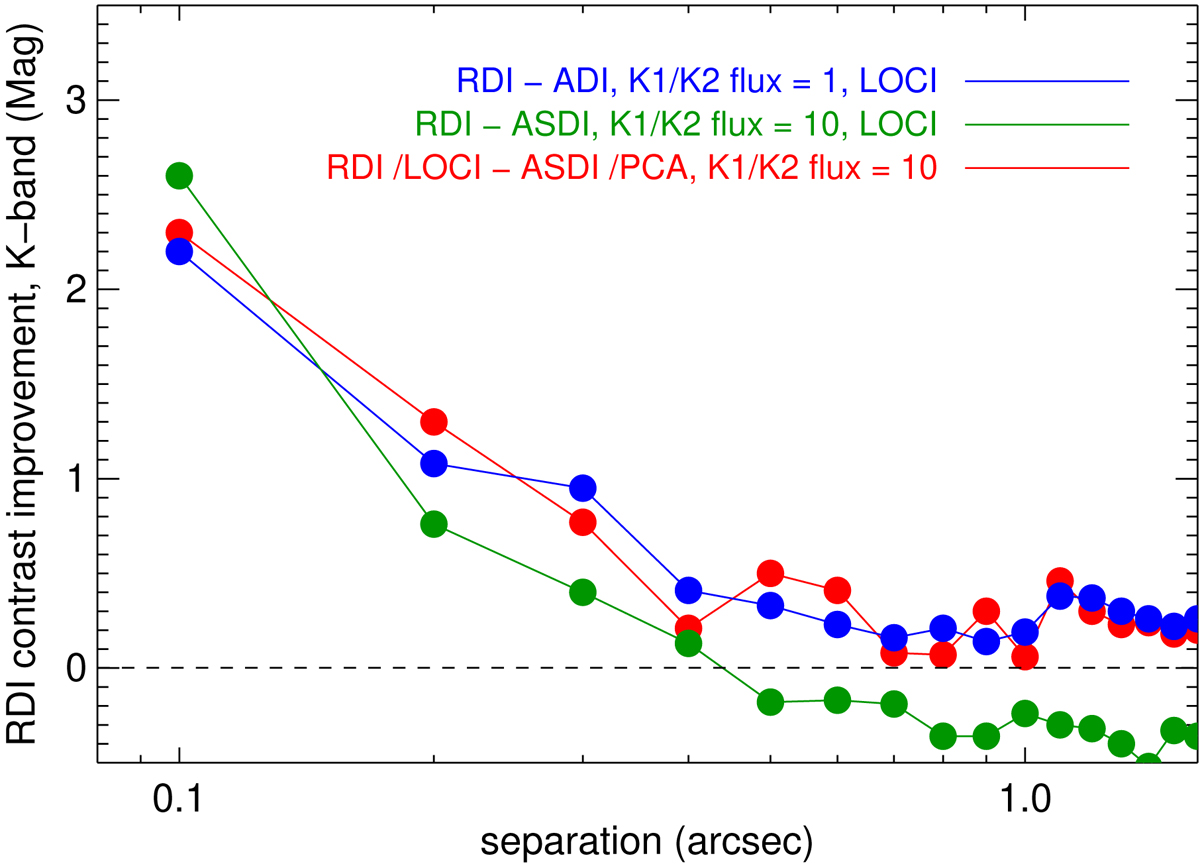Fig. 5.

Contrast improvement using RDI over ADI or ASDI, estimated from the S/N of recovered simulated companions from an IRDIS data set. The star-hopping RDI technique yields detections limits more than 2 mag fainter than ADI at 0![]() 1 separation from the target star. The green line shows the case for a K1/K2 companion flux ratio of 10 and very similar algorithms for RDI and ASDI, except that the ASDI reduction is fine-tuned to minimize self-subtraction. The blue line similarly shows RDI−ADI difference for equal K1, K2 flux. The red line shows the RDI improvement against the best PCA-based ADI reduction for a K1/K2 flux ratio of 10. The LOCI and PCA reductions are described in Sect. 3.3.
1 separation from the target star. The green line shows the case for a K1/K2 companion flux ratio of 10 and very similar algorithms for RDI and ASDI, except that the ASDI reduction is fine-tuned to minimize self-subtraction. The blue line similarly shows RDI−ADI difference for equal K1, K2 flux. The red line shows the RDI improvement against the best PCA-based ADI reduction for a K1/K2 flux ratio of 10. The LOCI and PCA reductions are described in Sect. 3.3.
Current usage metrics show cumulative count of Article Views (full-text article views including HTML views, PDF and ePub downloads, according to the available data) and Abstracts Views on Vision4Press platform.
Data correspond to usage on the plateform after 2015. The current usage metrics is available 48-96 hours after online publication and is updated daily on week days.
Initial download of the metrics may take a while.


